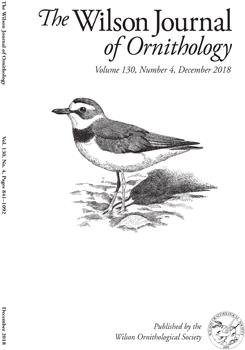Nestlings of some aerial insectivores experience pre-fledging mass recession, possibly to achieve optimum wing loading at fledging. However, studies to date where mass recession was linked to wing loading at fledging have been limited to 2 species of swifts (Apodidae), and additional studies are needed to determine if factors contributing to prefledging mass recession vary among species. We examined factors contributing to pre-fledging mass recession by nestling Tree Swallows (Tachycineta bicolor). During the 2015 breeding season in Kentucky, nestling Tree Swallows in 29 broods were divided into half-weighted, full-weighted, and control treatment groups. Lead weights weighing either 2.5% (0.6 g) or 5% (1.2 g) of nestling mass were glued to the back feathers of half-weighted and full-weighted nestlings, respectively, between 9 and 11 days post-hatching. Video recordings were used to monitor provisioning and begging behavior. Treatment groups did not differ in mass at fledging, amount of mass lost, or wing loading at fledging, and adult provisioning rates and time spent begging by nestlings did not vary from day 11 to day 19 post-hatching. Thus, mass loss by nestling Tree Swallows prior to fledging was not due to changes in either parental or nestling behavior, but likely resulted from loss of water from maturing feathers and other tissues. In contrast, studies of 2 species of swifts (Apodidae) revealed that changes in nestling behavior influenced pre-fledging mass recession, with weighted nestlings losing more mass than control nestlings, apparently to optimize wing loading at fledging. This difference between swifts and Tree Swallows may be due to differences in the duration of nestling periods (longer for swifts) and wing loading (higher in swifts). With greater wing loading, optimum mass at fledging may be more critical for swifts than Tree Swallows.
How to translate text using browser tools
9 April 2019
Factors influencing pre-fledging mass recession by nestling Tree Swallows (Tachycineta bicolor)
Katrina Moeller,
Gary Ritchison
ACCESS THE FULL ARTICLE
aerial insectivore
begging behavior
provisioning behavior
Tachycineta bicolor
wing loading





